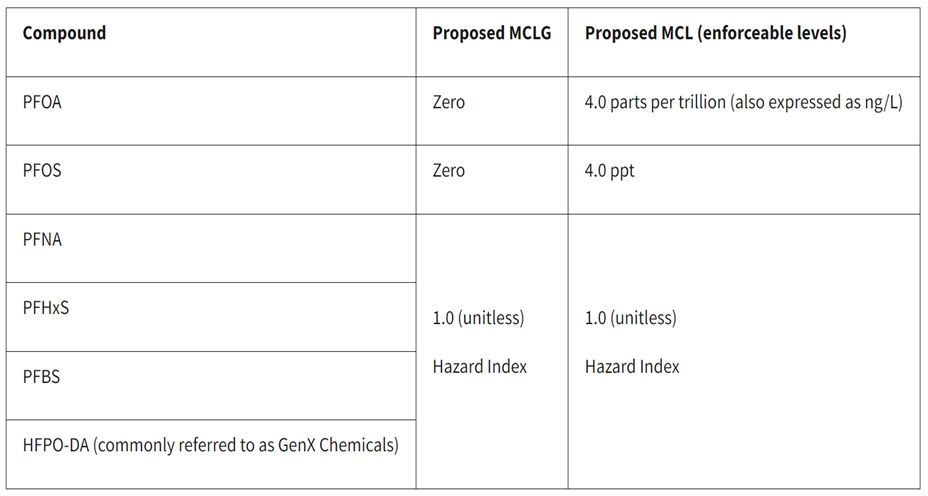Per- and polyfluoroalkyl substances (PFAS) are a large family of man-made chemicals that contain carbon, fluorine, and other elements. The two most widely studied PFAS chemicals are perfluorooctanoic acid (PFOA) and perfluorooctane sulfonate (PFOS); these chemicals were voluntarily phased out of production in the United States by 2015. However, as many as 3,000 other PFAS chemicals are still used in a wide variety of applications. The scientific community is researching to better understand the health impacts of PFAS chemicals; however, there is considerable knowledge that PFOA and PFOS may lead to detrimental health effects. Point-of-Use (POU) and Point-of-Entry (POE) water treatment systems such as those that use Reverse Osmosis (RO), Granular Activated Carbon (GAC), and Anion Exchange, can assist with the reduction of PFAS in drinking water
The EPA has accelerated the pace of research and actions needed to tackle the PFAS. Outlining the EPA’s commitment to action through 2024, the PFAS Strategic Roadmap provides a comprehensive strategy aimed to invest, research, and restrict PFAS in the environment. On March 29, 2023, the EPA published its proposal for the first National Primary Drinking Water Regulation (NPDWR) for six PFAS. The proposal consists of both an enforceable Maximum Contaminant Level (MCL) and non-enforceable Maximum Contaminant Level Goal (MCLG) for PFOA and PFOS as well as a hazard index (HI) calculation for PFNA, PFHxS, PFBS, and HFPO-DA (GenX Chemicals). The EPA will accept public comments on the proposed rule until May 30, 2023. The EPA is expected to finalize this regulation in late 2023, and it would take effect by 2026.

For more information read the Water Quality Association’s PFAS Overview.
WQA Comments to Proposed NPDWR for PFAS Chemicals
WQA submitted comments to the EPA highlighting the capabilities of third-party certified POU and POE drinking water treatment systems.
See other actions by WQA:
